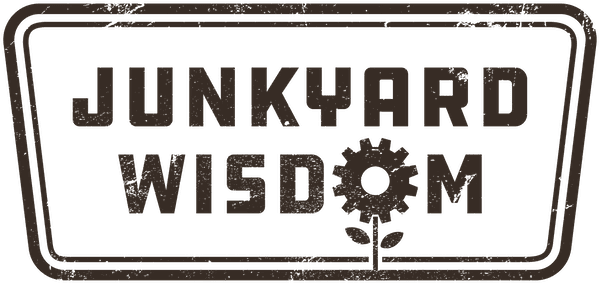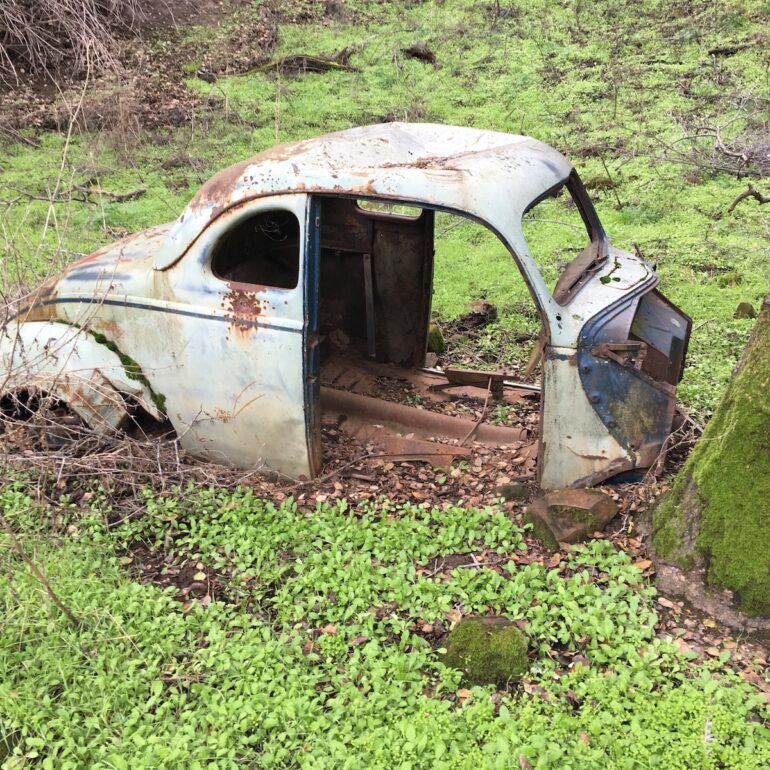Not far from the Goble Ranch, a couple hundred feet down the side of a steep hill surrounded by oak trees, sits the ruins of what is probably a 1940 Ford. Not much is left – just the body and frame. The serial numbers and license plates are long gone, as is the engine.
Nobody knows how or when it got there. But it’s been at least 50-years because that was when I first found it. It was an old wrecked junker even then.
We’ve made up stories about the car for years. It was used by bootleggers, or it was target practice for World War II trainees. Maybe it was dumped by bank robbers or murderers! More likely it is something stupid, like a drunk driver on a joy ride in the hills who lost control on the steep slope.
Nobody knows, but that didn’t stop our imaginations.
The car reminds me of how little I know. I can see and touch it. But I don’t know the whole story. I don’t know what the car did or who owned it or drove it or sold it or pulled the old parts out of it.
Sometimes people are like this. We see a lot when we get to know a person – especially when you’ve known them for 50-years, like I have this old car. But we also know so little. What is their true history? How did they get to this place at this time? What people were in their lives that shaped them? Who hurt them? Who loved them?
It’s tempting to fill in the blanks with assumptions, or stories, or self-deceptions. We create fantasies – like bank robbers and bootleggers – because it’s fun. Or because we are desperate to get a handle on the person. That’s unfair to others, and foolish on our part, but it rarely stops us.
Old junk cars can tell us a lot if we listen. Lately, one thing that they’ve been telling me is I probably only know half of what I think I do.

